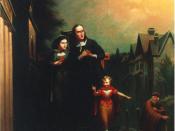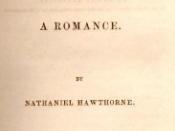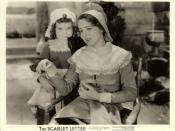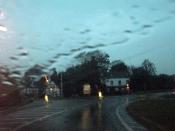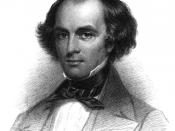Hawthorne's style also consists of the use of many metaphors and symbols. Among the metaphors in The Scarlet Letter are the many allusions to Pearl; the "elf- child, airy sprite, and imp"; there are also the more disturbing term of "devil's offspring." These are very disquieting images, especially when considering that Pearl is only seven years of age. Reverend Dimmsdale's sermons demanding confession and repentance also become metaphorical in that he hopes that one of his parishioners will see a hidden meaning and expose his sin as he cannot do so himself.
Hawthorne uses many symbols in The Scarlet Letter; the entire character of Pearl is symbolic. Hawthorne uses many images of light and dark, a few stand out in particular. Hawthorne's images of light and darkness are almost interchangeable with those of day and night. The Scaffold scenes alternate: day, night, day; day is a time for exposure, night is a time for concealment.
Hester's sin is displayed throughout the novel during the day, while Dimmsdale's is only first shown in secret at night. Chillingworth commits his sins during the day, yet his most effective experiments are conducted in his laboratory, which is so dismal it is almost as if it was an artificial night. Hawthorne's style also consists of the use of many metaphors and symbols. Among the metaphors in The Scarlet Letter are the many allusions to Pearl; the "elf- child, airy sprite, and imp"; there are also the more disturbing term of "devil's offspring." These are very disquieting images, especially when considering that Pearl is only seven years of age. Reverend Dimmsdale's sermons demanding confession and repentance also become metaphorical in that he hopes that one of his parishioners will see a hidden meaning and expose his sin as he cannot do so himself.
Hawthorne uses many symbols in The Scarlet Letter; the entire character of Pearl is symbolic. Hawthorne uses many images of light and dark, a few stand out in particular. Hawthorne's images of light and darkness are almost interchangeable with those of day and night. The Scaffold scenes alternate: day, night, day; day is a time for exposure, night is a time for concealment. Hester's sin is displayed throughout the novel during the day, while Dimmsdale's is only first shown in secret at night. Chillingworth commits his sins during the day, yet his most effective experiments are conducted in his laboratory, which is so dismal it is almost as if it was an artificial night.
